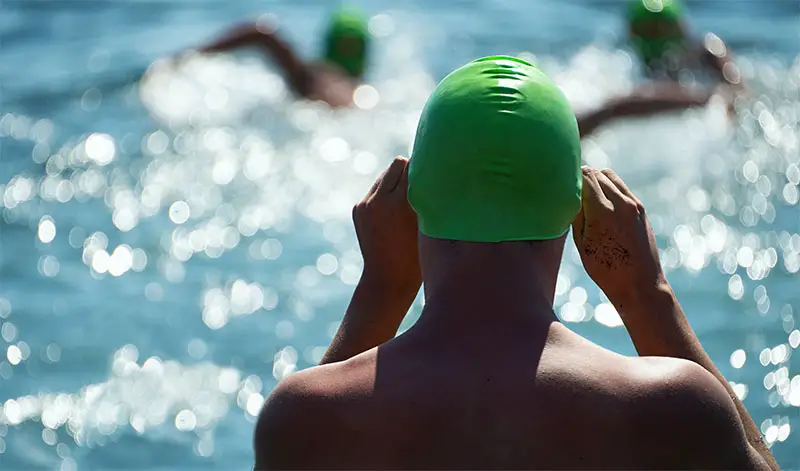How Much Swimming Is Too Much?
Swimming is one of the healthiest activities you can do to enhance your physical and mental strength. Lap swimming can help you to tone your muscles, burn fat, and become an overall happier person. Aside from that, the activity can train you to survive if you ever experience an incident where you have to swim to safety. You’re on the right track if you’ve chosen lap swimming as a way to get into shape.
Contents
However, it’s essential to know how much swimming is enough for you. Too much of a good thing can be harmful, even for someone who enjoys swimming. Here’s some information that can help you understand your limits. It explains how much swimming is too much and what you can do to ensure that you don’t overdo it.
Knowing Your Swimming Level

You need to know your swimming level before you start lap swimming in a routine. Understanding what level you’re on will help you determine how much swimming is too much. Your swimming level is a combination of your experience, your skill level, and the time you can spend swimming laps comfortably before you exhaust yourself.
You must increase your swimming level at a slow pace. The repercussions of doing too much too soon are mental and physical fatigue, injury, and loss of motivation. Pacing yourself and learning in short increments will keep the joy alive for you.
There are generally three levels of swimmers. You should evaluate your level honestly to decide how much swimming is too much for you. These are the three swimming levels for you to review:
Beginning Swimmer
You might be a beginning swimmer if you’ve just gotten into a pool for the first time. Maybe you’ve even learned a few strokes. This period will be your most vulnerable time as a swimmer. Therefore, you need to keep your lap count short and limit the amount of time you spend in the pool. Swimming two to three laps in the beginning is enough to loosen you up and make you more flexible. You can safely swim up to three laps initially and then increase your training by 10 percent each session. Try to push the number of laps from three to four the following week, for example.
Don’t try to be an Olympic swimmer right away, because it’s not going to happen. Pain and fatigue will be the only medals you win if you push yourself. Take your time and enjoy the activity. You’ll be ready to advance to the next level once you can complete five to 10 laps per session and spend at least 15 minutes in the water.
Intermediate Swimmer
At an intermediate swimming stage, you can probably spend up to 30 minutes in the water and perform 1,000 yards worth of lap swimming. At that point, you are incredibly comfortable in the water, and you move with grace and style. You can go for long periods without becoming winded and fatigued. From here, you should still adhere to the 10 percent rule and only increase your activity that much each session. You’ll build your skills enough to become an advanced swimmer progressively.
You should always pace your training out to improve your laps no more than 10 percent each week, even if you’ve been at it for a year or longer. This slow pacing will prevent you from experiencing the after-effects of over-exertion. Too much swimming can cause you to develop symptoms such as sore joints, achy muscles, breathlessness, and extreme hunger and thirst. Those symptoms will tell you if you are overworking yourself or using up all your reserves.
Advanced Swimmer
As an advanced swimmer, you’ll have the resilience and strength to swim more than 3,000 yards. You’ll be confident in your technique and styles as well. You may have much stronger muscles in your arms and legs at this point, and you will probably swim many laps without taking a break. The average time you swim may increase to longer than one hour. It’s important to remember that you can still experience injuries, even if you believe you’re on an advanced level. Therefore, you must be careful at all times. Continue to follow the 10 percent rule always. We’ll share some tips on how you can prevent injuries and fatigue.
Listen To Your Body
When doing any kind of exercising, being aware of your body is important. When learning how much swimming is too much, being aware of your body is even more important. If you get cramps, or begin having breathing issues, you can end up in a dangerous situation pretty quickly if you ignore the warning signs.
Aside from life-threatening situations, you can also end up injured if you are not aware of pain that could be your shoulders telling you to take a break. If you are dragging during a workout, maybe you didn’t eat enough before or are dehydrated and need to eat a snack or drink some fluids. We really can’t overstate listening to your body enough (in any kind of exercise) – it’s that important.
Things to Avoid

Now, let’s talk about some of the things you should avoid doing while you are training yourself to swim more laps. These are some of the things to avoid when learning how swimming is too much:
Too Much Too Soon
Your primary focus while you’re training yourself to swim should be to avoid injuries before they happen. You can do that by avoiding some common swim training mistakes. One of the most prominent mistakes swimmers make is taking on too much too quickly. The 10 percent rule is the most effective rule for preventing swimming injuries before they happen. All crafts take time to build. Therefore, you need to be patient with yourself and avoid pushing your limits beyond what you can do comfortably.
Bad Swimming Form
Bad swimming form is a common mistake beginner swimmers make. If you learn to swim using poor form, it can make swimming much harder for you in the water and can even lead to injury down the road. If just starting out, find a friend who has been swimming for some time that can give you pointers on your form or think about investing in a swim coach.
Always Swimming the Same Stroke
Swimming the same stroke always is like doing the same exercise every time you workout. You don’t do just bench press every time you workout, right? Swimming different strokes works different muscle groups and honestly makes swimming a lot more enjoyable. Plus, if you swim just freestyle every time you swim, you could be putting yourself at risk of injury.
Not Getting Enough Nutrition
You should avoid swimming without getting the proper nutrition. You’ll need to eat a meal that has plenty of protein and vitamins at least an hour before you start your workout. That way, you’ll have the fuel you need, but you won’t experience cramping from eating close to the time you start your routine.
Things to Do

Now you need to know some of the things you should do to ensure that your swimming sessions benefit you greatly. These are some elements you should put on your “to-do” list when it comes to swimming:
Rest and Recovery
Rest and recovery times are crucial and you should not compromise them for any reason. It’s never a good idea to do the same activity every day. You’ll need to give your muscles a chance to recover from any strain you may have placed on them. You’ll also need to provide them with the opportunity to heal. Give yourself at least one day in between each lap session for the best results.
Hydration
Always be sure to drink the recommended amount of water. In addition, drink at least 16 ounces of water two hours before working out and hydrate during your swim workout as well. That way, you’ll avoid dehydrating yourself when you swim difficult laps and engage in strenuous swimming activities. The recommended amount of water is eight 8-ounce glasses per day. You can read a chart to see if your weight and gender classes require more.
Shorter Workouts
It’s best to perform shorter swim workouts instead of marathon sessions. For example, it’s better to do 3 or 4 thirty minute swim workouts as opposed to 2 one hour long workouts. Doing this is better for your body and will give you the benefit of more cardiovascular workouts per week.
Swim at Least Two Days a Week
Always ensure that you swim at least two times per week. As with any exercise, you can lose your progress if you stop doing the activity for too long. The ideal number of days to practice is three each week. That way, you’ll have at least one day in between each workout, and you’ll still get more than enough exercise.
Conclusion
As we mentioned above, figuring out how much swimming is too much really comes down to a few things. Knowing your current swimming level is the most important, as you don’t want to hurt yourself (or worse, die) because you thought you could crank out a few thousand meters when you just started swimming last week. Also, listening to your body is just as important. If your body gives you warning signs of pain or distress, don’t ignore it.
Always consult with your doctor before starting a new exercise program. If you have any of the below medical conditions, it is always best to check with your doctor to be safe:
- Heart problems
- Asthma
- High blood pressure
- Diabetes
- Other previous injuries
